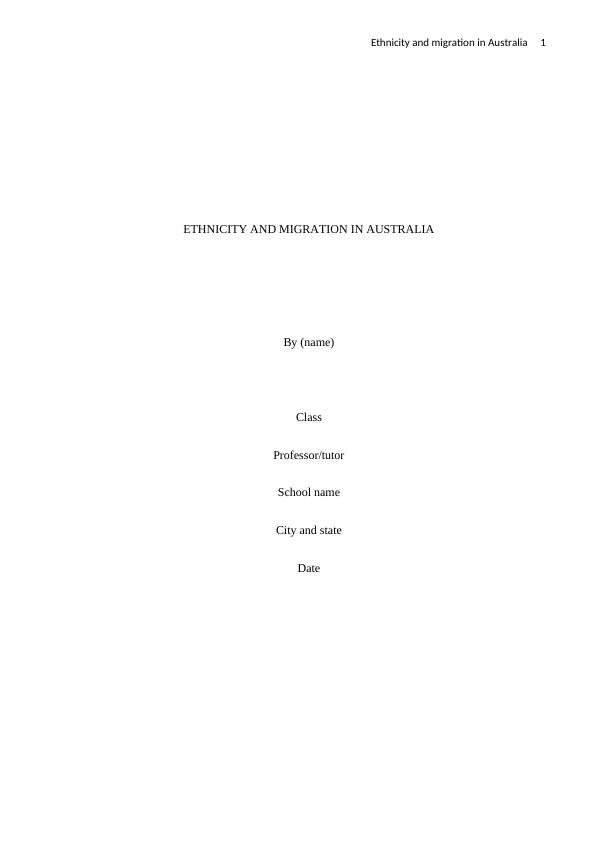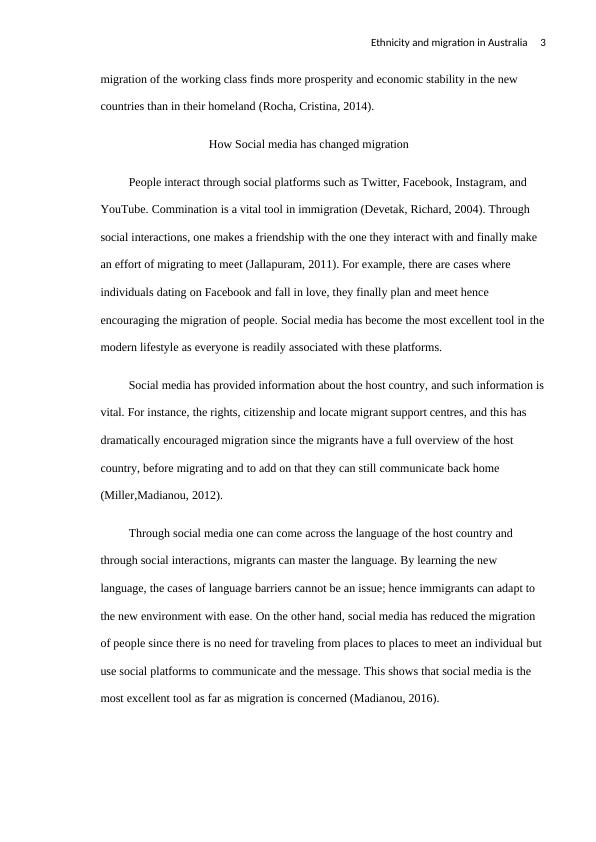Ethnicity and Migration in Australia
This article explores the experiences of international students in Australia and their transition to becoming skilled migrants. It highlights the challenges and uncertainties faced by student-migrants and the impact on their daily lives and long-term migration strategies.
11 Pages3069 Words70 Views
Added on 2023-03-17
About This Document
This article explores the impact of ethnicity and migration in Australia. It discusses how globalization, social media, transnationalism, the internet, and new technology have changed migration patterns. It also examines the barriers to movement and the consequences of backlash against migration. The article provides insights into the different reasons for migration and the factors that influence mobility for different groups of people. Additionally, it discusses the reasons for the backlash against migration and the consequences of such backlash. Overall, this article provides a comprehensive overview of ethnicity and migration in Australia.
Ethnicity and Migration in Australia
This article explores the experiences of international students in Australia and their transition to becoming skilled migrants. It highlights the challenges and uncertainties faced by student-migrants and the impact on their daily lives and long-term migration strategies.
Added on 2023-03-17
ShareRelated Documents
End of preview
Want to access all the pages? Upload your documents or become a member.
Increasing Number Of Romanian Migrants In Hospitality Business|Report
|21
|7444
|48
Race Ethnicity and Migration: Causes, Patterns, and Controversies
|14
|4441
|427
Why Immigration should be stopped in Australia
|12
|3337
|93
Race Ethnicity Migration and Nationalism
|8
|1744
|10
The Important Difference Between Assimilation and Integration
|5
|588
|27
Multiculturalism as the Ideal Model of Migrant Integration
|8
|2610
|269




